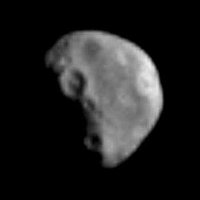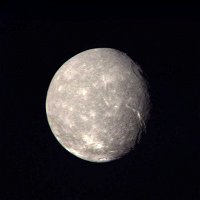
See How They Shine Trivia Quiz
Where Could You See These Moons?
The planets, dwarf planets and even asteroids of our Solar System have a wide choice for moons you might see shine there. I picked ten of them. Can you figure out on or near which body you would need to be to personally see how they shine?
by WesleyCrusher.
Estimated time: 3 mins.
- Home
- »
- Quizzes
- »
- Science Trivia
- »
- Our Solar System
- »
- Moons









